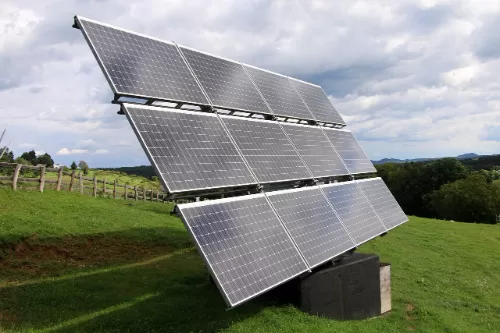Save on Your Energy Bill Comparing Electricity Providers in 2025

Why Choosing the Right Electricity Provider Matters Now More Than Ever
Today’s electricity providers offer a wide range of plans designed to meet evolving consumer needs. Fixed-rate plans allow customers to lock in prices for 12 to 36 months, protecting them from market fluctuations. In contrast, variable-rate plans—though more volatile—may offer savings during seasonal price dips. Green energy plans, once limited in availability, are now mainstream. According to the Solar Energy Industries Association, 60% of providers now offer renewable options. In Texas, for instance, Gexa Energy delivers 100% solar energy plans priced competitively with conventional coal-powered options.
Key Factors to Consider When Evaluating Electricity Providers
Rate Structures
Billing methods vary across providers. While some charge a flat rate per kilowatt-hour (kWh), others use tiered pricing models—charging more once a certain usage threshold (e.g., 1,000 kWh/month) is exceeded. In deregulated markets like Pennsylvania, companies such as Constellation Energy offer time-of-use plans, which provide rates up to 30% lower during off-peak hours.
Commitment to Renewable Energy
A 2024 survey by J.D. Power found that over 50% of U.S. consumers prioritize sustainability when choosing an energy provider. Companies like Green Mountain Energy in New York and CleanSky Energy in Illinois supply electricity from 100% wind or solar sources—often at rates comparable to fossil fuel options. Always review a provider’s Renewable Energy Certificates (RECs) to validate green energy claims.
Hidden Fees and Contract Terms
Some providers advertise low rates upfront but conceal additional charges in the contract’s fine print. Common hidden costs include early termination fees (typically $150–$300) and monthly service charges unrelated to actual usage. Programs like Ohio’s Energy Choice help identify providers with transparent billing practices. For example, AEP Energy is known for eliminating hidden fees.
Customer Service and Reliability
Service quality, especially outage response time, plays a critical role in provider selection. In 2024, Texas-based companies like TXU Energy and Reliant received top marks for storm recovery efforts. In contrast, several smaller Midwest providers faced backlash due to extended outages and slow response times.
Emerging Trends Among Electricity Providers
Growth of Renewable Energy
Federal incentives under the Inflation Reduction Act are accelerating the shift toward renewables. By 2025, Xcel Energy aims to deliver 80% renewable electricity across its eight-state service region—up from 51% in 2023.
Adoption of Smart Pricing Technologies
New dynamic pricing models powered by artificial intelligence are being tested. Providers such as Georgia Power are implementing hourly pricing plans that adjust based on real-time grid demand. Paired with mobile app alerts, these plans help users reduce consumption during peak periods.
Expansion of Community Solar Programs
For those unable to install solar panels—such as renters or homeowners with unsuitable rooftops—community solar programs are becoming more accessible. In Massachusetts, Eversource allows residents to subscribe to nearby solar farms, cutting electricity bills by 10–15% without requiring installations at home.
How to Switch Electricity Providers Effectively
Use Comparison Platforms: Tools like EnergyBot or ChooseEnergy.com enable users to filter by rate type, contract terms, and renewable energy share.
Read Reviews: Check platforms such as the Better Business Bureau (BBB) and Trustpilot to evaluate customer satisfaction and complaint histories.
Review Exit Policies: Before switching, ensure your current contract does not impose early termination fees—especially if you plan to move or change plans.
Utilize State Resources: States like New Jersey offer Energy Switch programs that automatically compare providers for you each year.
Real-Life Examples of Savings
The Martinez family in Houston, Texas, used EnergyBot to switch from a variable-rate plan (18¢/kWh) to Direct Energy’s fixed-rate solar plan (12¢/kWh), saving $720 annually. In California, retiree Linda Choi joined the East Bay Community Energy program in Oakland, choosing a 50% renewable plan and reducing her yearly bill by $200.
Conclusion: Why It’s Time to Rethink Your Electricity Plan
As electricity providers compete on price, sustainability, and innovation, consumers in deregulated markets have more control than ever. Transparency and flexibility are increasingly standard. Taking just 30 minutes to compare your options could result in long-term financial savings—while also contributing to a cleaner, more resilient power grid.

How to Avoid Cold Sores: A Comprehensive Guide

Slash Your Energy Bills How Modern Energy Equipment Pays for Itself

Top 5 CRM Software Trends Shaping Businesses in 2025

The Molecular Detective How Mass Spectrometry Uncovers Hidden Health Clues in Your Breath

Finding the Best Hearing Aid for Seniors

5 Essential Pharmaceutical Devices Every American Household Should Have

Robots with Empathy Can Machines Really Understand Feelings

A Comprehensive Guide to Medspa Software in 2025

UK food bank charity reports record take-up amid cost of living crisis

Best Knee Pain Relief Near Me